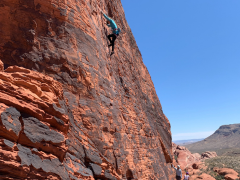Police Data Challenge: Winner Recommendations
February 1, 2018
The Police Data Challenge contest brought talented high school and undergraduate students across the nation to show their passion for the good statistics can do.
With the Police Foundation’s efforts to make the information available, the 70 teams used real crime data sets from Baltimore, Seattle and Cincinnati police departments to analyze the best possible solutions for safer communities.
Check out below how the winning teams analyzed the best way to fight crime through statistics:
Best Overall
Valley Christian High School, San Jose, CA
Catalina Bartholomew, Sophie Mason, Grace Ding and Allie Restani worked on deducing the times and locations of future crimes by analyzing the crime reports from the Seattle Police Department. They recommended relocating police officers because the crime distribution data varied from week to week.
Sponsored by: Claudia Smith
Winona State University, Winona, MN
Jimmy Hickey, Kapil Khanal, Luke Peacock divided the crimes into more detailed categories than what the Seattle Police Department data provided. They used the crime types and locations to discover that gun related crimes are condensed in specific areas. Their recommendation was to raise public awareness of the times and locations of high crimes and include more police for patrol.
Sponsored by: Silas Bergen
Best Use of External Data
Bethel Park High School, Bethel Park, PA
Through the Baltimore Police Department data, Alaina Cerro, Sean Conroy and Elise Bermudez found that disorderly conduct was the most reported crime, followed by traffic stop incidents and common assault. Their recommendations were for police officers to be placed at different locations for each shift and for fewer hours for higher performance. Another recommendation was to disperse police officers to areas where the average number of calls and time of year show high crime.
Sponsored by: Lee Cristofano
University of Wisconsin – Madison, Madison, WI
Luke Zheng, Qianyu Liu, Scott Lai, Sicheng Chu, Xi He used data from the Baltimore Police Department to decipher crime related to football games. Their recommendations were for police stations to record the location of the calls more accurately, including details about the road. The police department can use that information to accurately decide how many officers to send and where.
Sponsored by: Karl Rohe
Best Visualization
Charlotte Latin School, Charlotte, NC
Alex Lapuente, Ana Kenefick and Sara Kenefick used the Seattle Police Department data trends for possible explanations to crime. Through observation, the team recommended employment outreach programs in districts where unemployment is high, and so is crime. The team also analyzed the impact of poverty on crime by addressing financial aid, and access to affordable housing and meals.
Sponsored by: Donna Minnig
University of Virginia, Charlottesville, VA
Julia Nguyen, Katherine Qian, Youbeen Shim, Catherine Sun analyzed the Baltimore Police Department data. They recommended more efficient assignment of officers based on time of day, day of the week and location. They recommended allocating more resources for locations with higher crime rates and a faster response by building stations nearby. Other recommendations were to create youth programs, activities and installing street lights in dense crime areas.
Sponsored by: Jordan Rodu
Interested in using statistics in the real world? Stick around and get your bracket ready for Statsketball 2018!
Related Posts

Hindsight Is 2023 for Former Statistics and Data Science Students
It’s back-to-school season! Gear up for the upcoming semester and consider diving into the captivating world of statistics and data science. Looking for diverse job opportunities that span across every industry? Look no further! With a variety of graduate programs and jobs, now is a great time for students to become data scientists and statisticians….

Elizabeth J. Kelly: “Statistics is for Adrenaline Junkies”
Elizabeth J. Kelly has always loved math, and as a professional statistician at Los Alamos National Laboratory (LANL) and a recreational rock climber, Elizabeth is an avid thrill-seeker who enjoys a challenge. “Math reminds me of climbing, including the need to focus, problem solve and persevere. I guess I ended up in statistics because I…

